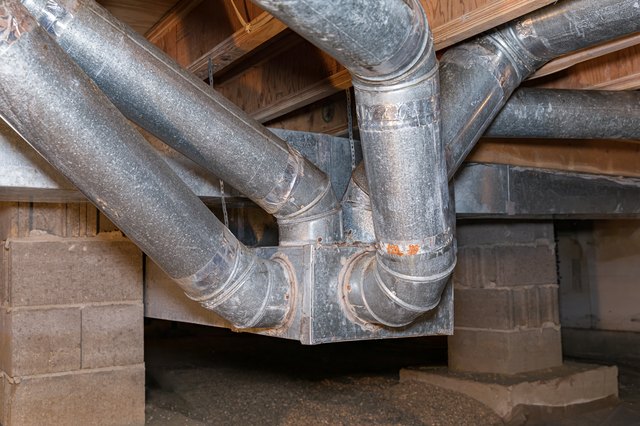Your home’s vent pipes play a crucial role in maintaining a healthy and comfortable living space. These pipes expel harmful gases and fumes from appliances like furnaces, water heaters, and stoves, preventing them from accumulating indoors. However, over time, vent pipes can become clogged with dust, debris, and other blockages, hindering their proper functioning. This guide will delve into the essential steps of how to clean vent pipes effectively, empowering you with the knowledge and techniques to improve your indoor air quality and safeguard the health of your household.

Image: www.ehow.com
Understanding Vent Pipes and Their Significance
Vent pipes are essential components of your home’s ventilation system. They are typically made of metal or plastic and extend from gas-burning appliances to the outside of your house. Their primary purpose is to provide a safe pathway for the expulsion of dangerous gases, including carbon monoxide, nitrogen dioxide, and other combustion byproducts. Without proper ventilation, these gases can accumulate indoors, posing severe health risks such as headaches, nausea, and even carbon monoxide poisoning.
Symptoms of Clogged Vent Pipes
Several signs indicate that your vent pipes may be clogged. If you notice any of the following symptoms, it’s essential to address the issue promptly:
- Unusual odors: A musty, gas-like smell in your home can indicate a clogged vent pipe.
- Poor indoor air quality: Clogged vent pipes prevent proper ventilation, leading to stale air and a lack of fresh airflow.
- Condensation on windows: Excessive condensation on windows or walls is a sign of high indoor humidity, which can result from poor ventilation.
- Soot or dirt: Black soot or dirt around your gas appliances may indicate a clogged vent pipe that is not releasing combustion byproducts properly.
- Increased energy consumption: A clogged vent pipe can force your appliances to work harder, leading to increased energy usage.
Step-by-Step Vent Pipe Cleaning Process
Recognizing the symptoms of a clogged vent pipe is only the first step. The following steps outline the safe and effective process of cleaning vent pipes:
1. Locate the Vent Pipe: Identify the vent pipe connected to the gas-burning appliance you are addressing.
2. Gather Your Tools: You will need a wet/dry vacuum, a brush attachment, a ladder, and possibly a wire snake or auger.
3. Safety First: Turn off the appliance and ensure there is no gas or electricity flowing to it. Wear appropriate safety gear, including gloves and a mask.
4. Remove Debris with Vacuum: Use the wet/dry vacuum to remove any visible dust, debris, or cobwebs from the exterior of the vent pipe.
5. Brush Away Blockages: Attach the brush attachment to the vacuum and gently insert it into the vent pipe. Carefully brush the interior of the pipe to dislodge any stubborn blockages.
6. Use a Wire Snake or Auger: If you encounter significant blockages, a wire snake or auger can help clear them. Insert the snake or auger into the vent pipe and rotate it slowly to break up any obstructions.
7. Reconnect and Turn On: Once you have thoroughly cleaned the vent pipe, reconnect it to the appliance and turn it back on.

Image: derivbinary.com
Expert Insights and Actionable Tips
To maximize the effectiveness of your vent pipe cleaning efforts, take heed of these valuable tips from industry experts:
- Regular Maintenance: Clean your vent pipes annually, or more frequently if you live in an area with a lot of dust or debris.
- Proper Sizing: Ensure that your vent pipe is the correct size for your appliance. An improperly sized pipe can lead to incomplete combustion and venting issues.
- Professional Inspection: Consider scheduling a professional inspection of your vent pipes every few years to identify any potential problems early on.
How To Clean Vent Pipe
Conclusion
Maintaining clean vent pipes is a fundamental aspect of ensuring a healthy and safe indoor environment for you and your family. By following the steps outlined in this guide, you can empower yourself with the knowledge and techniques necessary to effectively remove blockages and ensure the proper ventilation of your home. Remember to prioritize regular maintenance and consult with professionals when needed to keep your vent pipes functioning optimally for years to come.